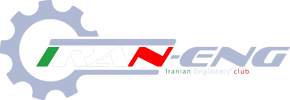bellow part is for me.continue from "Poor level control makes operation unstable and damages equipment"paragraph
Foam and How We Get Wrong Liquid Levels
Troubleshooting and control have the same needs, objectives: understanding the process and making it work better.
Automatic control systems have advanced far from their initial applications in the process industries. The conversion from local single-input single-output loops through initial application of advanced methods to current multivariable, adaptive, and neural network applications has increased plant profits. Petroleum refineries, petrochemical plants, gas processors, and other industries all benefited from control system improvements.
However, even our best control systems depend upon the information that comes to them. Control systems are decision systems. Control systems 'decide' to change some process conditions to maintain others at desired targets. Like every decision system, poor information leads to poor decisions. Poor decisions equal poor control. Poor control costs money.
Inaccurate information that fools our control system often fools us as well. When troubleshooting, we often use the same data the control system uses. Our judgment allows us to interpret the data differently, or even ignore it. Interpretation and judgment choices depend upon our knowledge of the process, understanding of fundamentals, and of how equipment works.
Modern control systems contain more than software and computers. They contain hardware to measure the process and transmit the information to the computer. Recent reporting has concentrated on the '***y,' new things in computers and software and overlooked the fundamentals of how the hardware works. Design errors, improper installation, and ineffective maintenance of the hardware cause many control problems.
For both troubleshooting equipment and improving unit control, we need to understand the fundamentals of how equipment works, how the process works, and how our measurement of the process works. Understanding the primary measures, how the control system or the troubleshooter interprets the unit readings, is key to solving process problems. It is also the key to designing and installing profit making control systems.


 i
i

 i
i


 and take decision what you are going to do about enjoying to group...
and take decision what you are going to do about enjoying to group...





 I really did my best to buttering you up but you didn't do sth that I requested
I really did my best to buttering you up but you didn't do sth that I requested